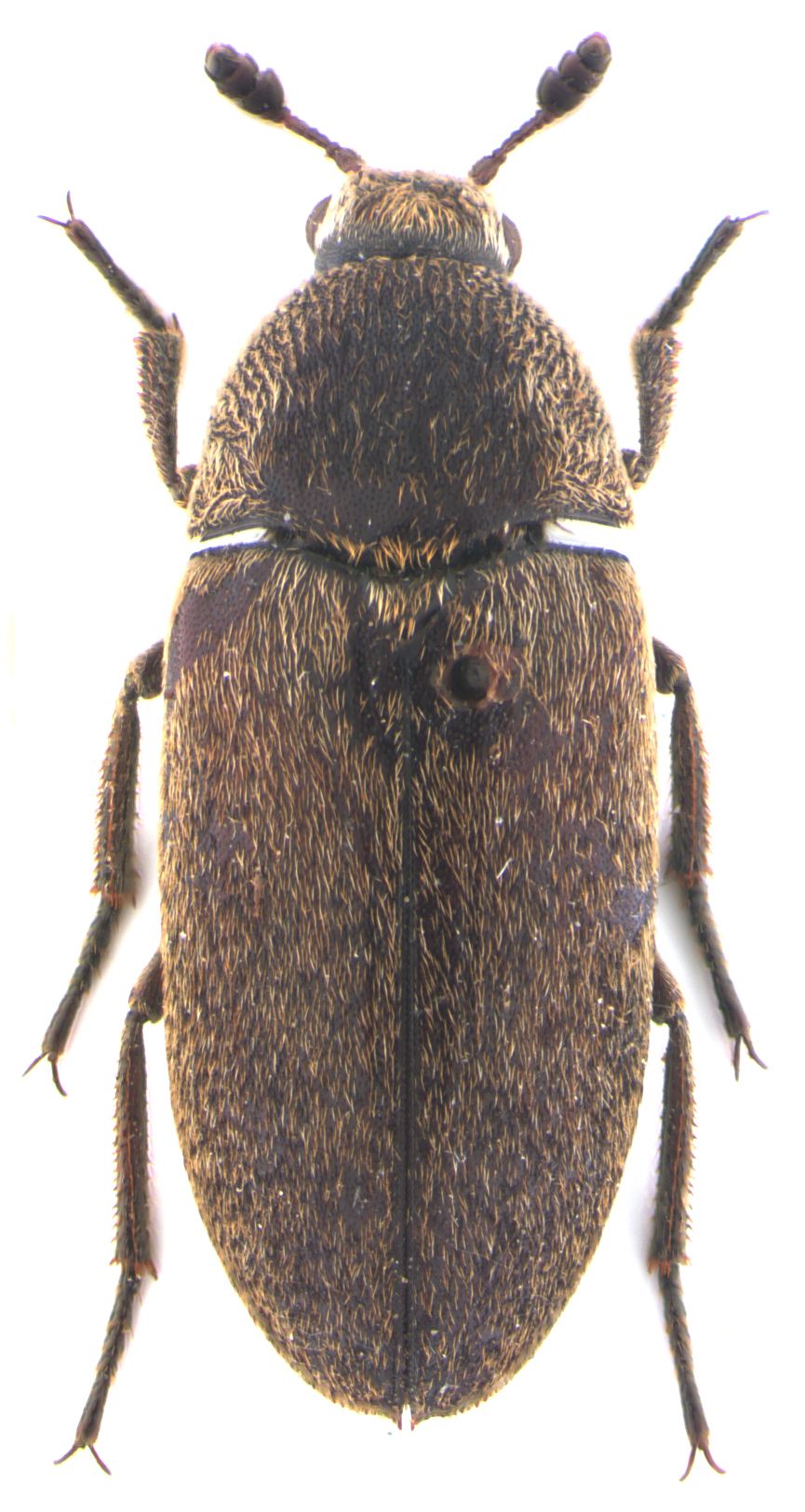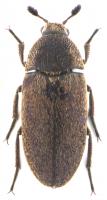Adult
Size
6 to 10 mm.
Aspect
Sturdy insect ; egg-like, elongate shape. The pronotum is massive and is 1/3 of the elytra in length.
Body about 2.5-fold more in length than in width and covered with flat, yellowish bristles.
The bristles are dense and thick on the sides of the thorax and form a wide golden stripe.
The same kind of pubescence is found on the top of the head and on the scutellum.
The antennae are short, they have 11 articles; the last 3 are wider and form a compact club.
The species is characterised by the presence of a small tooth at the end of the suture margin of each elytron.
Males differ from females by the presence of a reddish zone with a tuft of long red-brown hairs at its centre and located in the middle of their fourth abdominal sternite.
Colour
The dorsal face is brown, more or less reddish, legs and antennae are a lighter brown.
The colour of this species and its pubescence are quite variable; the background colour can range from red brown to black or grey.
The ventral face of the abdomen is mostly ornate with a white or slightly chalk-white pubescence. There are 2 black spots on the side of each sternite; in addition, the last sternite has a median blackish spot that extends to its front and rear borders.


 Dermeste des peaux
Dermeste des peaux  Hide beetle, Leather beetle
Hide beetle, Leather beetle  Dermeste zorruno
Dermeste zorruno 
